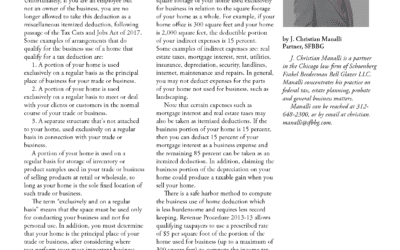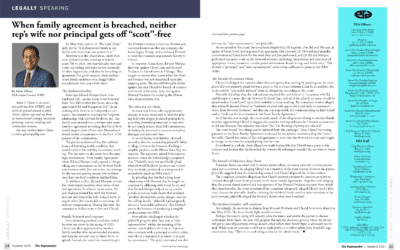For many small business owners, the key retirement plan decision is not what type of plan to adopt, but where the 401(k) plan funds should be invested. While 401(k) plans are the overwhelmingly popular plan of choice for employers, consider that alternative plan design options are available to maximize benefits for company owners with both 401(k) plans and other types of qualified retirement plans.
Some employers simply shun plan adoption when there is insufficient interest in contributing to the plans by non-highly compensated employees (“NHCEs”). Statutory non-discrimination tests limit the amounts that each highly compensated employee (“HCE”) can contribute to a 401(k) plan based on the contributions made by the NHCEs. These non-discrimination requirements can be easily circumvented through the use of statutory safe harbors. Safe harbor 401(k) plans involve an employer contributing a specified amount to the plan to enable the owners and other company employees falling into the HCE classification to contribute as much as they choose to the plan. These contributions are, however, subject to the statutory limits on annual 401(k) contributions to the plan – currently $20,500 plus an additional $6,500 for employees who have attained age 50.
For small companies with NHCEs collectively making insignificant elective deferrals or 401(k) contributions which thereby limit the plan contributions HCEs can make, the most effective safe harbor is an employer nonelective contribution of 3 percent of compensation. An employer who makes a fully vested contribution to the plan of 3 percent of compensation for each NHCE frees the plan of the 401(k) statutory nondiscrimination test and permits HCEs to maximize their elective deferrals. The benefits do not stop there. Once the 3 percent contribution is made for the NHCEs, the plan will be deemed to have satisfied another statutory test, the plan top heavy test, which generally requires contributions to be made to the plan for NHCEs where a significant portion of the plan benefits are held in the accounts of the HCEs. That same 3 percent safe harbor contribution can also be treated as a profit-sharing contribution, allowing an employer to make discretionary profit-sharing contributions to the plan. While many employers are not anxious to contribute funds to plans for the benefit of their employees, a properly designed plan will permit the additional profit-sharing contributions to inure largely to the benefit of the ownership group.
A good rule of thumb is to compare the aggregate contribution which an employer makes to the plan for non-owner employees to what the employer would pay in taxes without making the contribution. Assume, for example, an employer contributes $100,000 to a plan of which $40,000 is allocated to the accounts of the non-owner employees. For an employer in a 40 percent combined federal and state income tax bracket, the employer who does not contribute to the plan will retain $60,000 after taxes. Most employers facing the choice of paying $40,000 to the government in taxes or $40,000 to their employees will likely choose to make the $100,000 plan contribution so that the $40,000 out-of-pocket expenditure inures to the benefit of the employees. An employer that provides these benefits to employees may be able to leverage that benefit by limiting employee salary increases and bonuses and other company benefits, not to mention the intangible benefits of providing a generous overall compensation package which may limit employee turnover and dissatisfaction.
In this case, the 60 percent so-called “break-even point” is just a start. With a properly designed plan, business owners can often receive well in excess of 60 percent of the employer’s total plan contributions and sometimes 80 or even 90 percent of the total plan contributions. The very basic 3 percent safe harbor contribution opens a world of opportunity for plan designs.
Utilizing 401(k) plans may, for some small employers, be just the tip of the iceberg. The maximum aggregate contribution that can be allocated to a business owner in a profit sharing/401(k) plan for 2022 is $67,500. Depending on the age and compensation amounts for a company’s workforce, a properly designed pension plan can permit a business owner to make larger contributions with a disproportionate share of the plan benefits accruing for the benefit of the company owners. These plans work particularly well for business owners who are nearing retirement age and own businesses with a younger workforce.
Company owners have a number of available options when it comes to retirement plan design and implementation. The fact that a plan is already in existence need not be an obstacle to creating a new plan arrangement as retirement plans can readily be amended and redesigned. A small business owner who has the necessary cash flow to increase retirement plan funding should take a close look at the company’s existing benefit plan structure and consider alternative designs.
Should you have any questions regarding this subject matter, you may contact Bruce at (312) 648-2300 or send an e-mail to [email protected]. This article appears in The Representor, a publication by the ERA.



